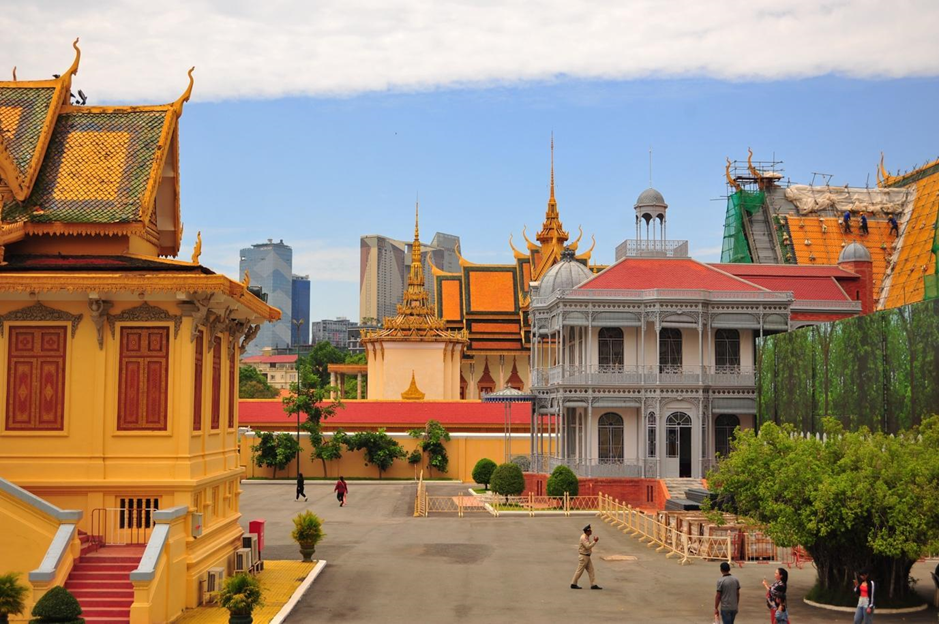Cambodia & History: Étienne Aymonier, discoverer and mediator of the Khmer and Cham worlds
- Editorial team

- Aug 27
- 4 min read
At the turn of the 19th and 20th centuries, amid the turmoil of colonial conquests and the exploration of distant lands, a remarkable figure emerged, who was in turn a soldier, linguist, explorer and scholar: Étienne François Aymonier (1844-1929). A man of many talents, he was the first scientist to methodically survey the ruins and decipher the inscriptions of the ancient Khmer kingdom—now Cambodia, Thailand, Laos and southern Vietnam—and to study the little-known Cham civilisation of these lands.

His seminal and enduring work has had a profound impact on archaeology, epigraphy, linguistics and the history of Southeast Asia.
From humble beginnings to the discovery of Indochina
Born on 26 February 1844 in Le Chatelard in Savoie, a rural region of France that was then part of the Kingdom of Sardinia, Étienne Aymonier grew up in a family of farmers and shepherds.
A brilliant young man, he joined the army in 1866, entering the École spéciale militaire de Saint-Cyr, from which he graduated as an officer in the marine infantry. In 1869, his career took him to Cochinchina (now South Vietnam), the first stage of his long immersion in the Indochinese peninsula.
Upon his arrival, Aymonier quickly immersed himself in the local culture, learning the Khmer language and developing a passion for the region's traditions. His position as inspector of indigenous affairs in Saigon (1870) gave him the opportunity to develop his language skills while forging close ties with the Cambodian communities scattered throughout Cochinchina.
Rise in the colonial administration and the beginning of scholarly work
From 1873 onwards, Aymonier became deputy to Jean Moura, France's representative in Cambodia, and soon succeeded him officially from 1879 to 1881. At the same time, he taught Khmer at the school for colonial administrators in Saigon, for which he wrote important linguistic works such as a Khmer-French vocabulary and dictionary, as well as a collection of Khmer texts. This dual role as civil servant and researcher was decisive for his meticulous fieldwork.
His incessant travels throughout the provinces of Cambodia enabled him to copy and translate numerous ancient inscriptions, mainly in Old Khmer and Sanskrit, which formed an essential basis for historical reconstruction. His publications from this period laid the foundations for the first works on Khmer epigraphy, then at the crossroads of multiple disciplines, with the collaboration of eminent Sinologists and Indologists.
The systematic exploration of the Khmer and Cham heritage
Freed from certain administrative constraints, Aymonier undertook several archaeological campaigns between 1882 and 1885 throughout Cambodia, Laos, Thailand and southern Vietnam. Using a novel method of moulding and stamping, he collected valuable epigraphic documents, providing the Western world with a solid scientific knowledge of the region's ancient civilisations.
A remarkable achievement was his trip to the Cham people in Phanrang, where he immersed himself in their language, culture and manuscripts, which had been little explored until then. Convinced that a better understanding of epigraphy required linguistic mastery, he surrounded himself with Cham collaborators, pioneering a collaborative approach to field research.

This passion led to the publication of a Cambodian-French dictionary with Antoine Cabaton in 1906, and numerous articles dedicated to Cham inscriptions and customs, which complemented his study of the Khmer people.
The monument of ‘Le Cambodge’ and academic recognition
Aymonier's magnum opus remains Le Cambodge, an ambitious three-volume treatise published between 1900 and 1904, which is a true synthesis of his archaeological, epigraphic and historical discoveries. This work, which remains an essential reference today, was among the first to offer a rigorous analysis of the ancient history of Cambodia and the Siamese provinces under Khmer influence.
Despite his prolific scientific output, his independent and sometimes undiplomatic nature earned him friction and controversy, particularly with Paul Pelliot and other sinologists, excluding him from certain prestigious circles of French research. Nevertheless, he was the first director of the École Coloniale in Paris, where he continued to pass on his knowledge, particularly of the Khmer language, until his retirement in 1905.
A living heritage and scientific legacy
In addition to his work, Aymonier built up an exceptional collection of Khmer sculptures, which is now on display at the Guimet Museum in Paris. His contribution goes beyond mere scholarship, having laid the foundations for Khmer epigraphy, a discipline that was then in its infancy, and revealed the little-known richness of the Cham civilisation.
Today, his name is immortalised through various institutions, publications and even a freshwater fish from Southeast Asia, the Gyrinocheilus aymonieri. He remains a key figure in ‘field Orientalism’ — a field orientalist, committed to the field and not locked away in an academic ivory tower.
A life dedicated to the memory of Indochina
Étienne Aymonier, a tireless explorer and demanding scholar, was able to unravel the mysteries of the inscriptions in the temples of Angkor and beyond, acting as a true bridge between the ancient East and the emerging West.
His work remains an essential milestone in understanding the historical roots of Cambodia and its neighbouring peoples. More than a century after his death, his legacy continues to inspire researchers and enthusiasts who follow in his footsteps through the ancient ruins of Southeast Asia.







Comments